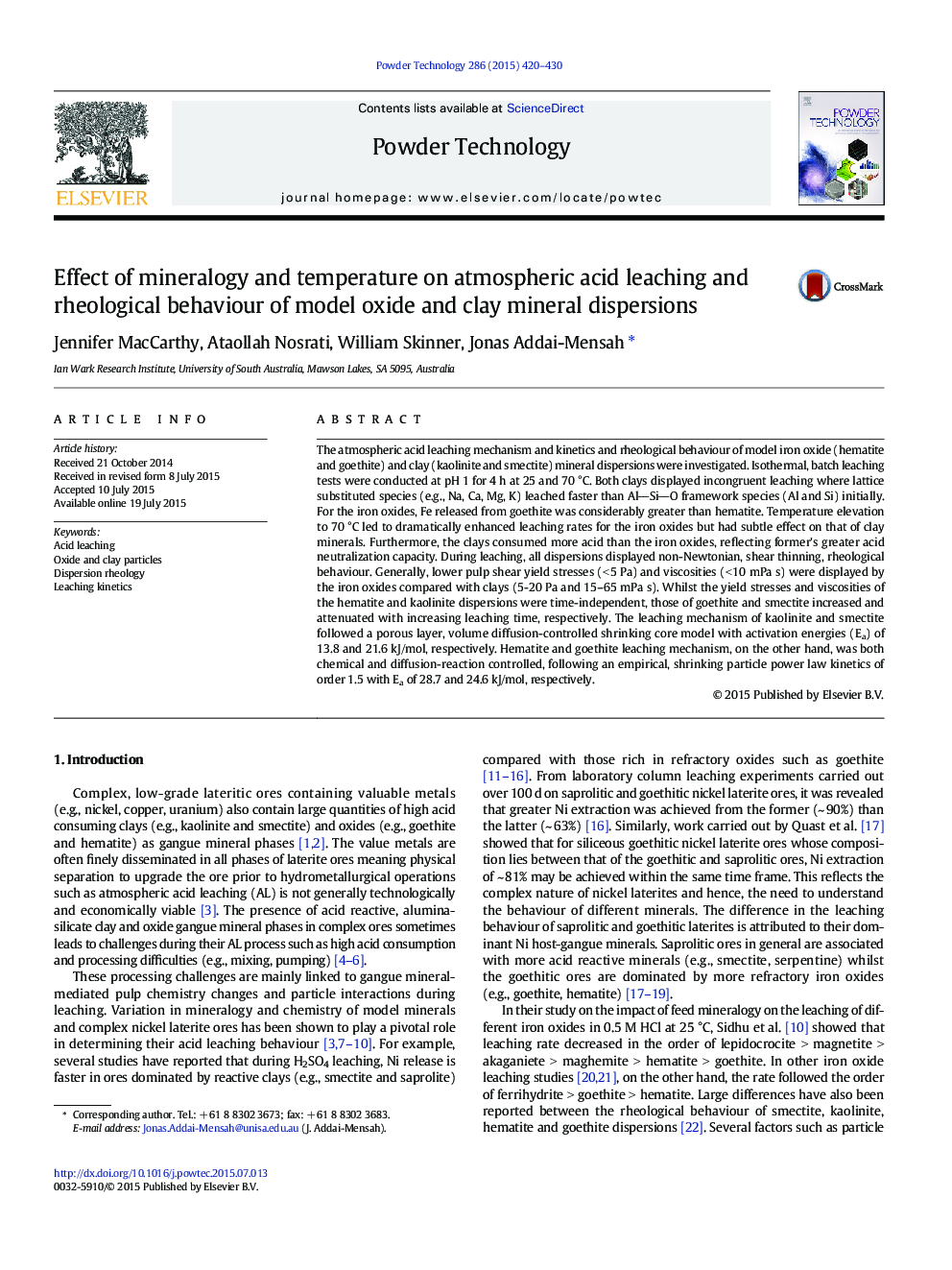| کد مقاله | کد نشریه | سال انتشار | مقاله انگلیسی | نسخه تمام متن |
|---|---|---|---|---|
| 235245 | 465631 | 2015 | 11 صفحه PDF | دانلود رایگان |
• Acid leaching and rheological behaviour of model oxide and clay mineral dispersions
• The impact of particle mineralogy/chemistry on acid leaching mechanisms/kinetics
• Time- and temperature-dependent shear rheology of oxide and clay dispersions
The atmospheric acid leaching mechanism and kinetics and rheological behaviour of model iron oxide (hematite and goethite) and clay (kaolinite and smectite) mineral dispersions were investigated. Isothermal, batch leaching tests were conducted at pH 1 for 4 h at 25 and 70 °C. Both clays displayed incongruent leaching where lattice substituted species (e.g., Na, Ca, Mg, K) leached faster than AlSiO framework species (Al and Si) initially. For the iron oxides, Fe released from goethite was considerably greater than hematite. Temperature elevation to 70 °C led to dramatically enhanced leaching rates for the iron oxides but had subtle effect on that of clay minerals. Furthermore, the clays consumed more acid than the iron oxides, reflecting former's greater acid neutralization capacity. During leaching, all dispersions displayed non-Newtonian, shear thinning, rheological behaviour. Generally, lower pulp shear yield stresses (< 5 Pa) and viscosities (< 10 mPa s) were displayed by the iron oxides compared with clays (5-20 Pa and 15–65 mPa s). Whilst the yield stresses and viscosities of the hematite and kaolinite dispersions were time-independent, those of goethite and smectite increased and attenuated with increasing leaching time, respectively. The leaching mechanism of kaolinite and smectite followed a porous layer, volume diffusion-controlled shrinking core model with activation energies (Ea) of 13.8 and 21.6 kJ/mol, respectively. Hematite and goethite leaching mechanism, on the other hand, was both chemical and diffusion-reaction controlled, following an empirical, shrinking particle power law kinetics of order 1.5 with Ea of 28.7 and 24.6 kJ/mol, respectively.
Figure optionsDownload as PowerPoint slide
Journal: Powder Technology - Volume 286, December 2015, Pages 420–430
